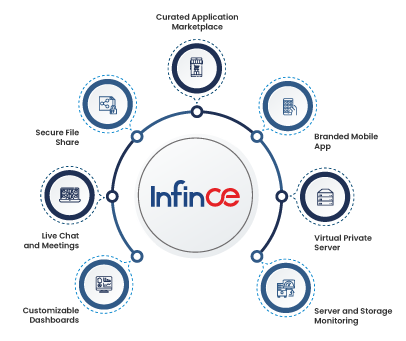Communication is intricate for business success. Your client relations, employee efficiency, and customer satisfaction all rely on simple communication. Ensuring effective, prompt, and clear communication is essential to any company. Can business communication software ensure streamlined communications?
Grammarly’s 2024 State of Business Communication report cites an interesting finding – Miscommunication in the workplace costs US businesses an estimated $1.2 trillion every year. Let’s extrapolate from this statistic to imagine that an organization y loses $15,000 per employee annually due to poor communication. Multiply that across an organization, and the cost balloons to trillions. Now, let’s step back to think of an alternate scenario where the business masters the art of effective communication—there’s a strong likelihood of a productivity increase by 25%, potentially impacting employee satisfaction positively.
In this blog, we drill down on what goes into effective business communication and how business communication software can positively impact your business’ bottomline.
What is Business Communication?
57% of an employee’s workweek is spent communicating via meetings, emails, and chats, the stakes for effective business communication have never been higher. Email and face-to-face meetings make up a significant portion of the communication in today’s workplace. But we must remember there is more to business communication. We need to expand our knowledge of how we can use multiple communication tools to fit the needs of your business. Business communication is a significant part of driving profitability and efficacy in your operations. Implementing an ideal business communication software is essential for organizations to change their performance for the better.
The Positive RoI of Business Communication
For every dollar spent on improving internal communications, companies see an average return of $6.50. Let’s explore how:
- Video conferencing tools eliminate travel costs while improving meeting engagement by up to 65% when paired with visual aids.
- Project Management tools can drive enhanced clarity, reducing missed deadlines caused by poor communication—a problem cited by over 42% of leaders.
How Does Business Communication Differ from Business Communication Services?
Business communication means the process of exchanging information within a workplace setting. This can be in the form of emails, instant messages, business meetings, and so on. Business communication services are the tools that businesses typically leverage to make business communication simple and streamlined. Aspects related to strategy meetings, client presentations, or internal memos are all that come in the ambit of business communication.
On the other hand, business communication services are the technological infrastructure that supports these exchanges—tools like VoIP systems and project management tools that streamline collaboration and messaging.
What Are the Steps to Set Up Your Business Communication Process?
Although there is no cookie-cutter approach to nailing the right set of steps, it is always a good idea to keep the foundation right. Here are some foundational aspects to consider:
Audit your communication processes: Identify inefficiencies in how information flows internally and externally before investing in tools.
Invest in integrated platforms: Robust business communication software like InfinCE can reduce tool-switching and streamline communications and workflows.
Measure impact: Use KPIs such as time-to-decision metrics or customer satisfaction scores to evaluate the ROI of your communication strategies.
Foster a culture of transparency: Encourage open dialogue through town halls or anonymous feedback channels—companies with transparent cultures report employee engagement levels that are 2x higher than their peers (HBR).
What Are the Different Business Communication Channels?
Instant messaging: You ask any remote worker what eases their work lives today? Boom comes the answer; instant messaging tools or chat services as they enhance collaboration and drive real-time communication. They are crucial for immediate responses and informal discussions, helping to streamline workflows and enhance productivity. A robust business communication software facilitates instant chats.
Video conferencing: As remote and hybrid workplaces become commonplace, and we become increasingly geographically dispersed, video conferencing tools are essential. They allow teams to collaborate in real time and enable alignment among teams.
Email: Even as other ancillary tools emerge, email continues to remain as a primary mode of communication within organisations today. It offers a formal channel of communication, providing a documented record of interactions. It is well-suited for detailed reports, client communications, and asynchronous exchanges.
Collaboration tools: Collaboration or business communication system offers a consolidated suite of tools that package several important communication features into a single comprehensive system. Be it task optimisation, resource allocation, real-time collaboration, or project delivery – all rolled into one.
Conclusion
While optimizing workflows and streamlining processes is just the tip of the iceberg, business communication sets your business up for success through improved employee engagement and enhanced workplace productivity.
Businesses that prioritize communication through business communication software will not only save costs but also unlock unprecedented levels of productivity and innovation. As Watson Wyatt’s research shows, companies with effective communication achieve a 47% higher return to shareholders over five years—a compelling case for immediate action. The question isn’t whether you should invest in business communication, it’s whether you can afford not to!
Test drive InfinCE today. Start your free trial now!





